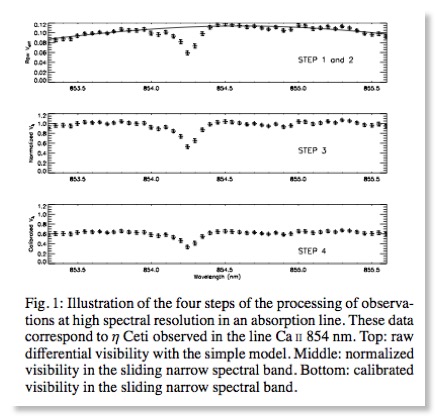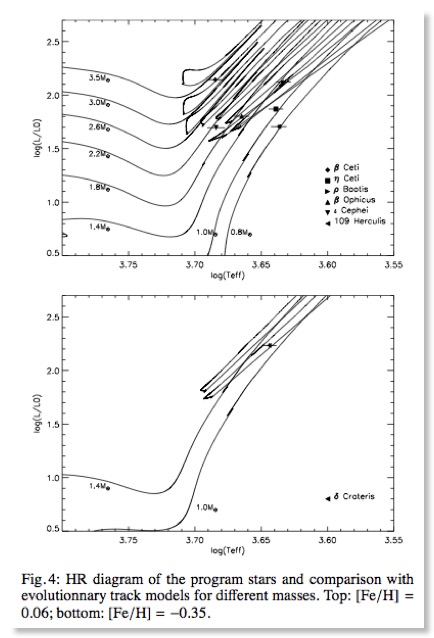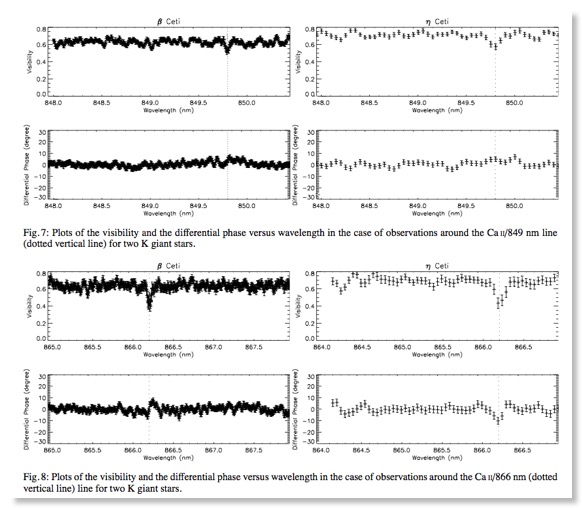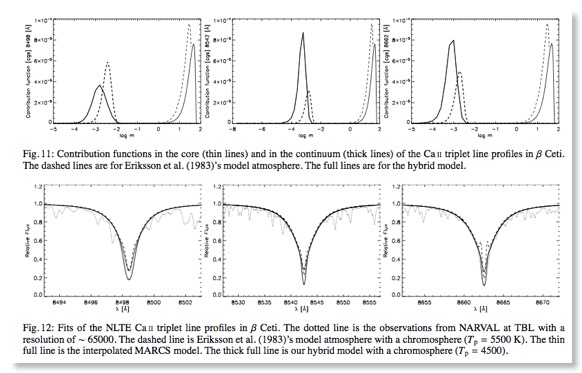by Ph. Berio, T. Merle, F. Thévenin, D. Bonneau, D. Mourard, O. Chesneau, O. Delaa, R. Ligi, N. Nardetto, K. Perraut, B. Pichon, P. Stee, I. Tallon-Bosc, J.M. Clausse, A. Spang, H. McAlister5, T. ten Brummelaar, J. Sturmann, L. Sturmann, N. Turner, C. Farrington, and P.J. Goldfinger, A&A, 535, A59
Interferometers provide accurate diameter measurements of stars both in the continuum and the lines formed in photospheres and chromospheres. Tests of the geometrical extent of the chromospheres are therefore possible by comparing the estimated radius in the continuum of the photosphere and the estimated radii in chromospheric lines. Aims. This study aims at constraining the geometrical extent of the chromosphere of non-binary K giant stars and at detecting possible spatial structures in the chromosphere.
We use the CHARA interferometer with the VEGA beam combiner working in optical wavelengths. We observed 7 non- binary K giant stars (β and η Cet, δ Crt, ρ Boo, β Oph, 109 Her and ι Cep). The comparison of relative radii between the photosphere and the chromosphere was performed using the interferometric measurements in the Hα and the Ca II infrared triplet line cores. For β Ceti, spectro-interferometric observations are compared to a NLTE semi-empirical model atmosphere including a chromosphere. The NLTE computations give line intensities and contribution functions indicative of the relative location where the line cores are formed and can constrain the limb-darkened disk of the stars with chromospheres.
We measured the angular diameter of seven K giant stars and deduced their fundamental parameters: effective temperatures, radii, luminosities and masses. We determine the geometrical extent of the chromosphere for four giant stars (β and η Cet, δ Crt and ρ Boo). The chromosphere extents obtained range between 16% to 47% of the stellar radius. NLTE computations confirm the deeper formation of Ca II/849 nm line core in the chromosphere of β Ceti compared to the Ca II/854 nm and Ca II/866 nm ones. An existing semi-empirical model atmosphere has been modified by fitting the Ca II triplet line cores of this star. We also detect in four of our targets the signature of a differential signal showing the presence of asymmetries in the chromospheres.
It is the first time that geometrical extents and structure in the chromospheres of non-binary K giant stars are determined by interferometry. These observations bring strong constrains to stellar atmosphere models.






